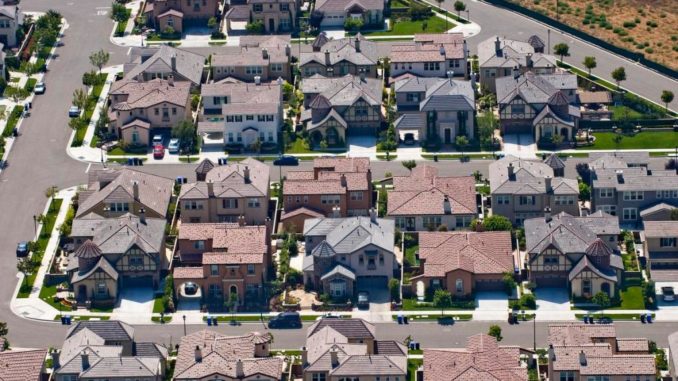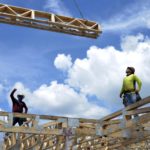
Homebuilder James Boyd has no trouble selling the homes he builds. The difficulty is getting them built in the first place.
High lumber costs, regulatory restrictions and a construction worker shortage continue to plague housing developers like Boyd, the Orange County-based president of Toll Brothers’ operations in California and Nevada.
“The demand side of our business is pretty fabulous right now,” said Boyd. “It’s really the supply side and the regulatory process” that impedes construction.
Boyd was one of a dozen experts speaking about the real estate outlook at the annual National Association of Real Estate Editors conference held June 13-16 in Las Vegas.
More than eight years into the second-longest economic expansion on record, the big question is how much longer will commercial and residential prices keep rising? And are we entering a new real estate bubble.
The short answer is no bubble, experts said. But expect prices to level off by 2020.
“Our view is there is going to be a slowdown and not really a recession,” said Revathi Greenwood, head of research for commercial brokerage Cushman and Wakefield.
Just Right “Goldilocks” Economy to Continue Into 2019 #NAREE18https://t.co/GEVfneTwA9@RevuGreenwood @BDugard pic.twitter.com/poEUoYDq10
— Tony Wilbert (@twilbert) June 15, 2018
https://platform.twitter.com/widgets.js
Most U.S. economists do use the R word, however.
About half the economists responding to surveys expect a recession by 2020, and 30 percent expect one to hit in 2021 or later, said Frank Nothaft, chief economist of CoreLogic, an Irvine-based real estate data firm.
Here are highlights of the real estate outlook for home buyers, builders and renters.
Homebuying
Rising prices, a shortage of homes for sale, escalating mortgage rates and federal tax revisions are making things incredibly difficult for home shoppers. And it’s taking them longer to find a home to buy.
Nearly three-fourths of home shoppers started their search last year, said Danielle Hale, chief economist for Realtor.com.
“You might think with all the competition out there, buyers would give up,” Hale said.
But more than 70 percent expect to buy a home by the end of the year, in part because buyers are “downsizing their dreams” — seeking smaller homes, cheaper homes or looking in less desirable, less competitive neighborhoods.
Adding to buyers’ woes, economists said, are rising mortgage interest rates, with the 30-year fixed forecast to go above 5 percent by 2019.
Those rate hikes, when coupled with a 6.9 percent year-over-year gain in prices, already have boosted the monthly house payment by 16 percent from a year ago — and by 19 percent for entry-level buyers, said CoreLogic’s Nothaft.
Currently, the typical U.S. mortgage totals $1,754 a month, up $245 from $1,509 a year ago.
Wage growth, by comparison, averaged 2½ percent to 3 percent over the past year.
“It becomes increasingly challenging for homebuyers, especially entry-level buyers, to afford to buy,” Nothaft said. “That affordability pinch, that bite out of the family budget, becomes just a little more severe.”
But it’s still too soon to call the current housing market a bubble, Nothaft said.
CoreLogic research shows about 32 percent of U.S. metro areas are “overvalued” — meaning their average prices are 10 percent or more above long-term trends.
The last time this many metro areas were overvalued was 2003, CoreLogic figures show. By the time the market peaked in 2006 — and about a year before the housing bubble burst — 67 percent of metro areas were overvalued.
Homebuilding
Homebuilding is projected to rise over the next two years but not enough to meet demand. That’s going to push home prices up even more, at least in the near term, forecasters said.
The low number of existing U.S. homes for sale should be good for home builders, said Robert Dietz, chief economist for the National Association of Home Builders. But builders haven’t been able to increase their supply either, exacerbating the nation’s “inventory” shortage.
Challenges facing builders include rising lumber prices and a labor shortage. Builders also struggle with development fees and getting local approvals to start construction.
Why aren't new single-family #homes being built? Dietz: Labor, lots, lending, local regulatory concerns and lumber. #naree18
— Robyn A. Friedman (@RobynAFriedman) June 14, 2018
https://platform.twitter.com/widgets.js
Despite that, homebuilder confidence is at a two-decade high because of strong demand, Dietz said. “The homebuilding market will grow, but not as fast as needed due to supply-side conditions,” he said.
Apartments
Rent hikes are getting smaller, but they aren’t going away.
Speakers cited a Yardi Matrix forecast predicting average apartment rents will increase 2.9 percent this year nationwide — with rent rising 4.7 percent in Los Angeles and 4.9 percent in the Inland Empire. By comparison, U.S. average rents were increasing at a 5.5 percent pace in 2015.
But demographic changes continue to push up demand for apartments, research by the National Multifamily Housing Council shows.
For example, the percentage of folks living alone has gradually increased, said Caitlin Walter, senior research director for the multifamily housing council. That boosts demand for apartments since married couples with children — just 20 percent of U.S. households — prefer houses.
In addition, about 32 percent of U.S. adults were living with their parents in 2016, up from 27 percent in 2005, U.S. Census figures show. That will add to the pent-up demand when they decide to move out on their own, Walter said.





